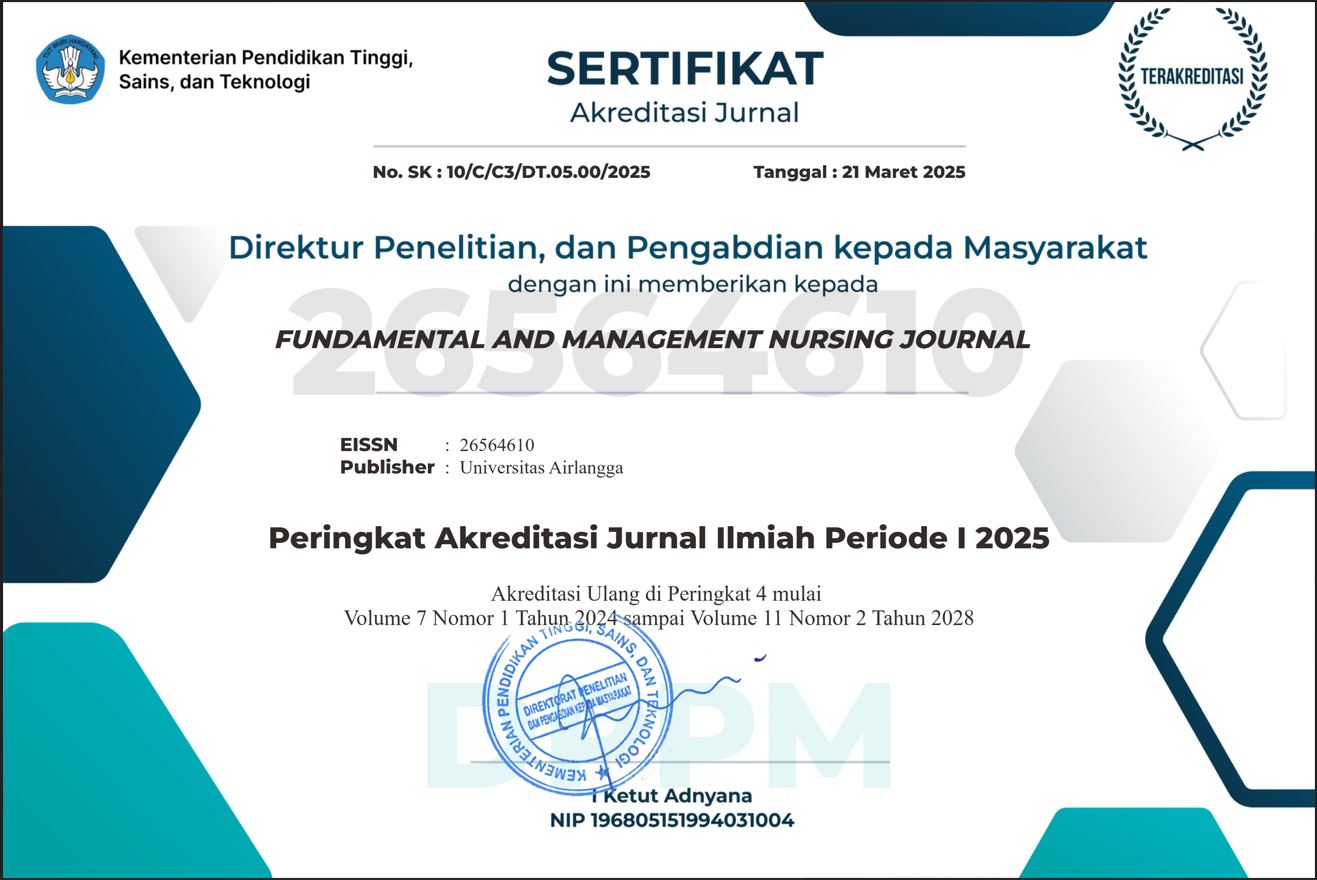Quiet Quitting of The Nurses: An Integrative Literature Review
Introduction: The concept of quiet quitting (QQ) gained widespread attention following its popularization on social media’s app ‘TikTok’ in 2022 and has since been recognized as a prevalent phenomenon among nurses and other healthcare professionals. To that effect, literature has alluded to the most concerning dire consequences. The study aimed to synthesize studies on QQ among nurses and suggest measures that can be used to alleviate this phenomenon.
Methods: The study applied five steps of the integrative literature review, guided by Preferred Reporting Items for Systematic Reviews and Meta-Analyses guidelines. The review encompassed research articles peer-reviewed and published between 2022 and 2025, in the following databases: Cumulative Index to Nursing and Allied Health Literature EBSCOhost, Education Resources Information Center, Google Scholar, Medline, Psych INFO, Science Direct and Pub Med. Included articles were written in English, published in 2020 to 2025, in peer-reviewed journals, and participants were nurses.
Results: Nine articles were ultimately reviewed and revealed three main themes factors contributing to QQ among nurses, including organizational and individual factors and supportive supervision; Consequences of QQ among nurses affected patient care and human resources; Measures that could be used by nurse managers to reduce QQ among nurses.
Conclusions: This study revealed interrelated factors that contribute to QQ dire impact of QQ on nurses. Nurse managers and policymakers need to be aware of this phenomenon and urgently put holistic, robust mitigating measures to ensure that working conditions are favourable and there is a balance in nurses’ work lives.
1. INTRODUCTION
The Coronavirus disease pandemic had an enormous effect on the mental health of all healthcare workers, especially the nurses. Studies highlighted that nurses experienced a lot of stress related to unfavourable working conditions and dealing with highly infectious diseases such as COVID-19(Farahani et al., 2024). Lack of job satisfaction and other myriad factors contribute to nurses leaving their jobs(Farahani et al., 2024). On the contrary, rather than leaving, employees might choose quiet quitting (QQ) due to financial reasons(Zuzelo, 2023). The concept of QQ was highly publicized in a social media app 'TikTok' video that went viral on the 25th of July 2022(Khan, 2022). The narrator of the video suggested that employees who have QQ behaviour tend to focus only on the scope of their work rather than going the extra mile to overperform. The further assertion by(Galanis et al., 2025)highlights that QQ employee opts not to resign from the workplace but deliberately decide to limit their job performance(Galanis et al., 2025). In this regard, the employees refrain from taking extra responsibilities, but just meet expected key performance activities as stipulated by their job description(Formica & Sfodera, 2022). Further assertion by(ÖZTÜRK et al., 2023)is that the QQ decides to limit performance, avert dismissal , get the salary, and at the same time sabotage the organization.
The QQ conduct has been found to be more prevalent among workers aged 18 and older(Zuzelo, 2023). Furthermore, most of these studies explained the occurrence of QQ among remote workers due to the restrictions imposed on going to offices to work during the pandemic. Factors contributing to QQ are publicized in the literature. Burnout, work-related stress, emotional fatigue, and inadequate career advancement have been related to QQ(Galanis et al., 2025). In support,(Nimmi et al., 2024)emphasized that lack of organizational policies, such as mental health and support systems for nursing mothers, can contribute to reduced work commitment and QQ. Lack of transparency in job allocations and unfair reward systems are likely to influence employees to resort to disengaging from the job(Nimmi et al., 2024). The unavailability of resources has been associated with demotivation and the inability to control the working environment. This would result in a negative attitude, reduced commitment, and increased QQ and ultimately leave the institution . In addition, the conflicting work and family life, and financial problems can lead to emotional problems, which ultimately cause employees to feel less enthusiastic(Nimmi et al., 2024).(Nimmi et al., 2024), also found that the workers decided to withdraw their utmost performance due to an unhealthy toxic work environment, characterised by bullying and unresolved conflicts. Notably, managers should be aware of these factors, and mitigating strategies should be put in place to minimize the QQ.
Studies have unanimously agreed upon the dire effects of QQ on the organization, clients and the individual quitter. According to(Serenko, 2024), QQ may sabotage the individual quitter's prospect for career advancement. The quitter's disengagement might result in destroying chances for promotion and endorsement from the manager(Serenko, 2024). The negative impact of QQ among healthcare workers includes a decline in the quality of patient care(Boy & Sürmeli, 2023)(Kang et al., 2020).(ÖZTÜRK et al., 2023)stipulate that the passiveness of the QQ contributes to sub-standard performance, which has long-term repercussions. Dire consequences of QQ on organizational learning include a decline in the transfer and sharing of crucial knowledge between seasoned and novice employees. Eventually, lack of information sharing contributes to the deterioration in the overall learning culture within the organization(ÖZTÜRK et al., 2023). The emphasis is that QQ renders the organization vulnerable to economic meltdown as it cannot benefit from its human resources, which are critical for sustainable competitive advantage. The QQ phenomenon has been found to be more prevalent among healthcare workers(Kang et al., 2023). According to(Boy & Sürmeli, 2023), healthcare workers experienced issues related to a toxic working environment, unfavorable working conditions, work-life imbalance, and fear of infections.(Ng & Stanton, 2023)emphasize that QQ is a risk to patients, other healthcare workers, and the organization. Therefore, effective strategies need to be put in place. Health organisation-led interventions are necessary to address the hierarchy of needs of its medical staff to motivate them to remain invested in a profession that is inherently meaningful.
Nurses are the backbone of the healthcare system and experience a lot of pressures and demands in their work, which was exacerbated by the COVID-19 pandemic. Nurses had to quickly adapt and learn new guidelines used for managing the highly contagious COVID-19. In addition, nurses were challenged by inadequate human resources due to colleagues' sick leaves and death. All of these negatively affected the nurses' psychological well-being(Kang et al., 2020)Despite that, several studies were conducted on QQ amongst nurses, it is important to establish the extend of this phenomenon. Furthermore, a more detailed allinclusive perspective of the key factors contributing to QQ among nurses might assist nurse managers and policy-makers in developing strategies. Therefore, the study aimed to explore the QQ among the nurses. Aim and objectives:
- The study aimed to synthesize research conducted between the years 2022 and 2025, and to explore QQ amongst the nurses. The specific objectives are:
- To identify the factors
Copyright (c) 2025 Sisinyana Hannah Khunou

This work is licensed under a Creative Commons Attribution 4.0 International License.
1. The journal allows the author to hold the copyright of the article without restrictions.
2. The journal allows the author(s) to retain publishing rights without restrictions.
3. The legal formal aspect of journal publication accessibility refers to Creative Commons Attribution (CC BY).
















